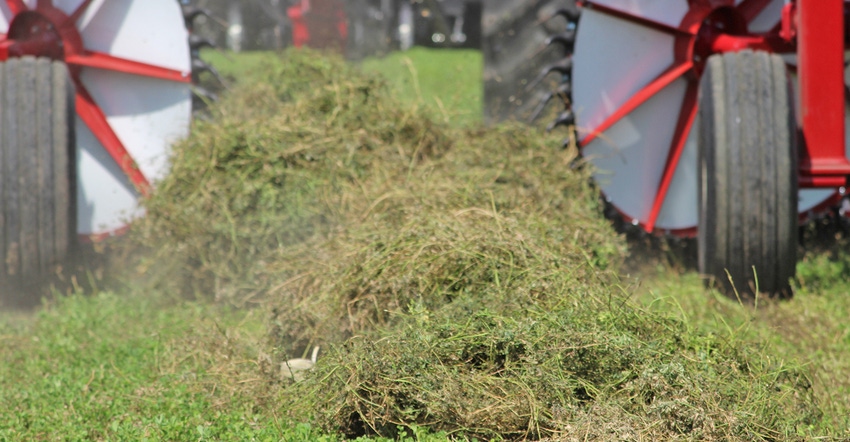November 6, 2019

Do you know your hay’s quality? Will it meet the nutrition needs of your cattle this winter? These are important questions as we enter the winter hay-feeding season, says Patrick Davis, University of Missouri Extension regional livestock field specialist.
Conducting a forage test helps answer these questions. Proper forage-testing protocol is important to get accurate results. Furthermore, understanding forage test results and how to incorporate them into a winter-feeding program allows the most benefit out of the results.
Collection advice
For proper hay sample collection with large rounds, a bale probe needs to be drilled or pushed into the round side of the bale, Davis explains. He urges cattle producers to subsample 10% of their winter-feeding hay resources.
After collection, mix these subsamples in a plastic bucket and then take a sample to send off to the forage-testing lab to determine hay quality. Davis reminds producers that a representative sample is key to accurate hay quality determination.
Since hay quality can vary by barn, purchase or baling location, multiple tests of winter-feeding hay resources may be needed for a representative sample and accurate hay quality determination.
“Sample management from collection to testing lab is important for accurate results,” Davis says. Wet forage samples should be frozen after collection and kept cool during the transport process to the testing lab for reduced deterioration leading to inaccurate results.
Also, send samples early in the week for speedy lab analysis and results. For questions about lab sample transport, contact your preferred forage testing lab.
Cattle needs
Cows consume pounds of forage dry matter and not bales of hay, Davis says. As more baleage is produced, a forage test is important to determine the forage DM. Forage DM information is used in proper forage allocation to cattle.
“In addition to forage DM, understanding forage fiber content allows prediction of cattle forage intake and utilization,” Davis says. Neutral detergent fiber and acid detergent fiber are forage test measurements used to predict forage intake and digestibility, respectively.
Given that a cow consumes 1.2% of its body weight in NDF DM daily, forage NDF measurements can be used to predict daily forage DM intake.
Total digestible nutrients and crude protein represent forage energy and protein content, respectively. “These two measurements help to determine if forage resources have enough quality to satisfy a cow’s energy and protein needs,” Davis says. If deficiencies are found, economical supplement strategies can be developed for optimum cattle performance and profitability.
Source: The University of Missouri Extension, which is solely responsible for the information provided and is wholly owned by the source. Informa Business Media and all its subsidiaries are not responsible for any of the content contained in this information asset.
You May Also Like




